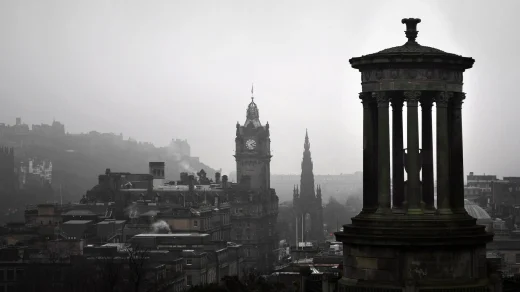The Reformed Orders and King David I
 |
| Saint Margaret |
The Reformed Orders
At the end of the 11th century monastic fashions were rapidly changing. The new reformed orders, like the Augustinians and Benedictines, started to live in cloistered communities and a stronger chain of command to the authorities in Rome was being established. Reform gave the Church a renewed sense of
moral purpose and authority. With this wave of reform came growing concern over depth of belief and heresy, and also a strong desire for uniformity across Christendom.
Queen Margaret invited the Benedictines to found a community in Dunfermline before she died in 1093, but there was considerable resistance from Gaelic Scotland to what was seen as an outside force influencing the Scottish Church and kingship. It was Margaret’s son, David I, perhaps the most innovative of all the Scottish kings, who revolutionised the Scottish church, bringing it into the European main stream.
David I – The State-building King
David had been brought up in the excitement surrounding the First Crusade (1095-99), which offered a new ideal of Christian Knighthood. His mother, Margaret, had a strong and pious influence on him, and from his time at the Norman court of Henry I of England he had seen the Norman fashion of kingship at first hand. When he returned to Scotland in 1113 to claim his inheritance from his brother, King Alexander I, he brought with him these new ideas, along with a pack of Norman followers to aid enforcement.
His revolution, which would ultimately reshape the Scottish Kingdom, began in
the lands in the south of Scotland – the old ancestral homes of the Angles and Britons. The latest monastic orders were brought in: the Augustinians to Jedburgh; the Tironensians to Kelso; the Cistercians to Melrose; and a new bishopric, complete with a new cathedral, at Glasgow. After David became King of Scotland in 1124, the reformed orders went on to establish themselves in Scone, St Andrews, Cambuskenneth, Holyrood and the royal centre at Dunfermline.
Granted massive estates by the monarchy, these new institutions gave renewed impetus to the economy and increased trade with Europe. The churches, bishops and abbots formed the king’s closest advisors; the monks formed an educated
bureaucracy which looked after the king’s records and administered
Scotland’s first systematic, written and recorded government.
It was a revolution from above as far as the local populace were concerned,
but it had profound implications for everyday life. The Church extended its role, establishing Scotland’s parish system and bringing Christianity to the heart of every community through the local parish priest, who blessed the crops and tended to the spiritual needs and fears of the community. David’s revolution also brought the king’s law to the people; at Roxburgh he established Scotland’s first Sheriffdom for the administration of the king’s justice.




❤️????????????????
thank you.
Can you be more specific about the content of your article? After reading it, I still have some doubts. Hope you can help me.